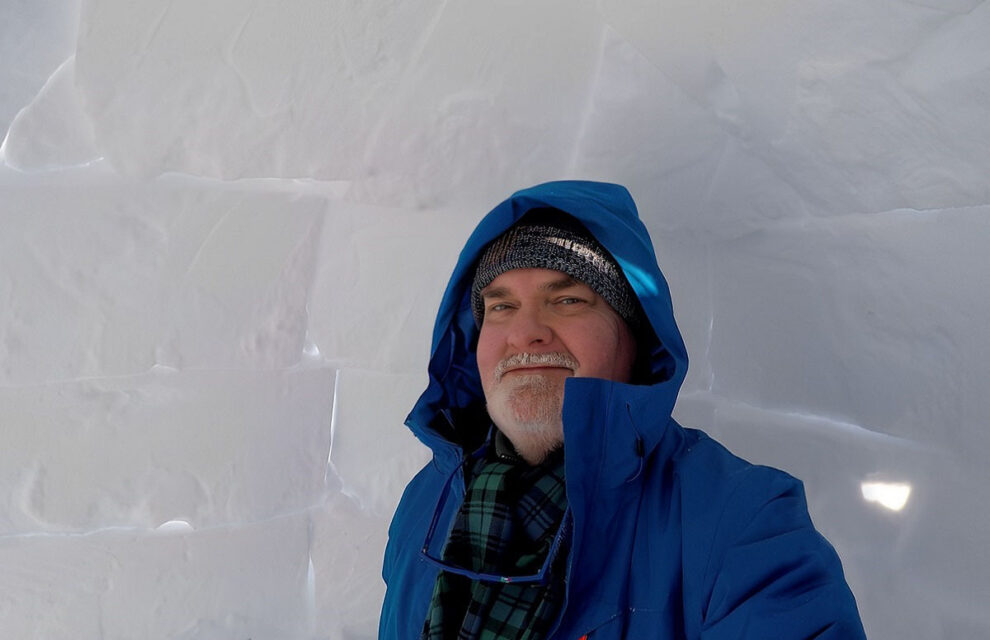Something happened along the way, between film lecture/screenings at Berkeley, University College London, Université Paris Cité, and the universities of Grenoble, Toulouse and Montpellier: I am going back to the drawing board, questioning my education from childhood onwards, rethinking just about everything these days.
It all started off inside an igloo that George Konana, his son and grandson built for me in Gjoa Haven, Nunavut, as in the feature photo at the top of this blog. By producing and directing The Blinding Sea, I left my comfort zone, learning how to make a film, how to work with many people from different cultures, how to tell a story visually, how to combine so many thousands of different elements to bring together words, images, sound and music.
This experience not only opened me up to a new paradigm of knowledge but actually put me right inside the paradigm. For example, I confess that at first, inside the igloo, I felt claustrophobic, because I wasn’t used to the temperature inside, the light, the enclosed feeling, the acoustics. Of course, if a storm had been howling outside, I would have appreciated sheltering from the wind! Then I relaxed, and realized how fortunate I was that Inuit – the direct descendants of the ones Roald Amundsen had known – were taking the time to teach me a new way of interacting with Nature.
After several film tours, where I have been meeting up with very diverse audiences, the questions have begun:
Do we experience the same events, or do we filter them through own perspective? Does our perception distort that experience? In crafting a narrative, do we distort our experience? To what extent does the narrative shape what we believe we are observing directly? Does the narrative come before, after, or during our observations?
What is knowledge? Is knowledge derived from our experience? How do we acquire it? How do we translate knowledge from one setting to the next, and into our practice? How is non-academic knowledge about health shared? How is indigenous knowledge about health shared, and, for that matter, patient knowledge?
Then again, to what extent does intersubjectivity offer a model of understanding from person to person? That is, a “person-to-person relationship, each person being considered from the point of view of his or her own subjectivity.” (This is my translation from the original French version of this definition, which is here: https://www.cnrtl.fr/definition/intersubjectivit%C3%A9 ).
If intersubjectivity is an ideal to be attained, how far can it take us, and what are its limits? What are the reasons people can reach out to others and understand their experience and world-views, and what are the barriers to sharing?
If philosophers like Maurice Merleau-Ponty and Paul Ricœur – champions and pioneers of intersubjectivity – used somewhat tortured language when analyzing it, can I do better than them? I certainly hope so!
Anyway, I am working on more film tours across Canada, the United States and Europe – in venues well beyond the university scene. I am also writing an expedition biography of Roald Amundsen as well as a study of lessons to be learned about Amundsen as an agile leader who learned from Inuit during a two-year apprenticeship. They painstakingly taught him a completely new way of interacting with Nature – working with Nature, rather than against it.
I remember that in presenting me, Michel Tsamados, a physicist interested in climate change and the environment at University College London, identified this single value – working with Nature – as the key to understanding my film, and a lesson the world would do well to learn from the Inuit.

